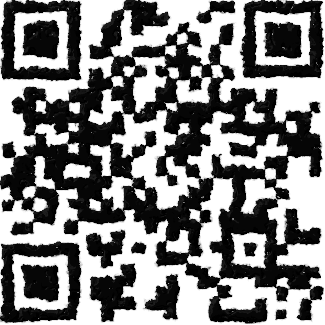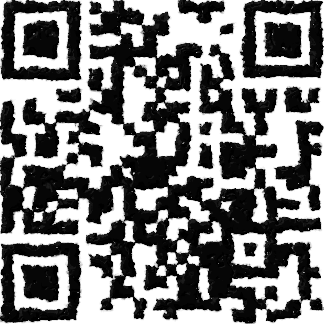Welcome to the Kipuka!
I am glad you are here and want to play by the rules. We have put a lot of time into organizing our rules to make viewing pleasurable on a variety of devices and still look good on paper. Before we dive into the rules lets go over navigating the rules. Click the down arrow or swipe up to continue reading this section.
You made it!
When you are ready you can click the right arrow or swipe left to advance to the first part of the rules. We would like to show you one quick thing first, so kindly click down or swipe up again.

When you see our logo you can click it to take you to the binder homepage.
Also when you click the book icon, it will take you back the table of contents for the rules.
Table of Contents
Game Forward
You may skip if you prefer
Kipukas is a game which draws the best concepts from creature card games and melds them with land conquering play. While I have personally enjoyed playing in other competitive card based games, I grew frustrated with becoming attached to certain characters, styles, and strategies only to have them become re-released, competitively invalid by the latest deck release, or banned due to corporate oversight. On top of this, game companies tend to produce very poor quality cards which are not meant to last, yet some manage to reach unfathomable prices not worthy of the underlying paper. Kipukas seeks to be different. I want Kipukas, both as a game and a durable good, to outlast myself. By making cards which are updatable without new releases, we keep all the cards we produce competitively relevant. Additionally, with most cards produced at extremely low rates, Kipukas challengers are much more diverse and play mechanics are protected from having to be changed due to our oversight. While most land conquering games are enjoyable as well as strategically challenging, I was dissatisfied with the amount of pure luck the games hinge on. By combining with the complex card v. card mechanics, Kipukas battles feel more engaging, all the while retaining the larger scale strategies of the land conquering play. While complex and entertaining play is great, I want Kipukas to take on deep meaning and help spread that to many wonderful people in this world. Kipukas will set industry standards for innovative play, company interaction, support of fan base, and environmental impact. Additionally, I hope many find Kipukas as enjoyable as I have found my competition. Better yet, more so.

Background
May also be skipped
Kipukas is a visualization of a world where society creates new worlds as they see fit. Each of these worlds are known as kipuka, which comes from the Hawaiian word for 'land between lava flows', and is symbolic of the destruction and rebirth of worlds. Cloning and genetic manipulation are the preferred methods of populating, expanding, and manipulating the worlds. In the game, the kipukas are represented by the 3D game map and the souls take life in the cards. The game represents the strife to control the world, while the players provide the motivation for the strife. The companion book series, Conscious Territory, which takes a deep dive into these concepts, is in progress with the first three chapters released and ready for reading. I have personally enjoyed working the concepts and hope you will enjoy contemplating them as well.

Objective: Conquer
Winning the game
Get off to a good start and establish base camps across the board. Win fights and think strategically to take your frenemies base camps and if you dare their capital! Once one player claims all base camps and capitals, they dominate the kipuka and win the game.
Required Game Pieces
Let's go over the pieces for a 2 player game
These are almost all provided in the starter kit for 2 players
- Personal Player Devices
- Practically any Android or Apple Phone, laptop computer will work with our game. If you want to use are QR codes (highly recommended) it will need a camera. This one is up to you to provide; we are not Oprah.
- Token Sets (Per Player)
-
Set includes 10 Soul tokens, 11 Base Camp tokens, and a Capital token

Capital: The hardest area to take
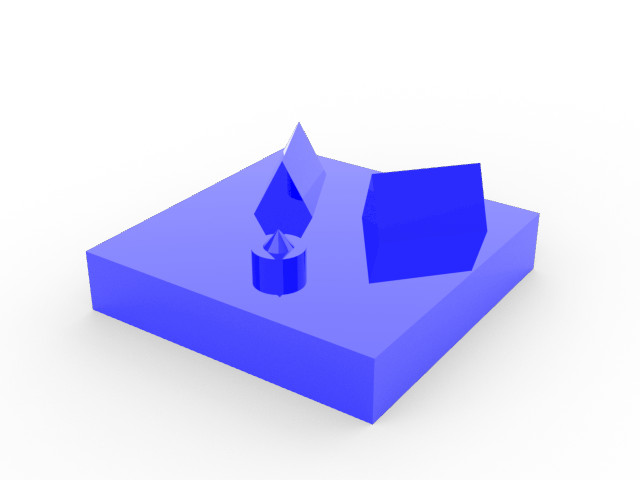
Base Camp: The standard base of operations
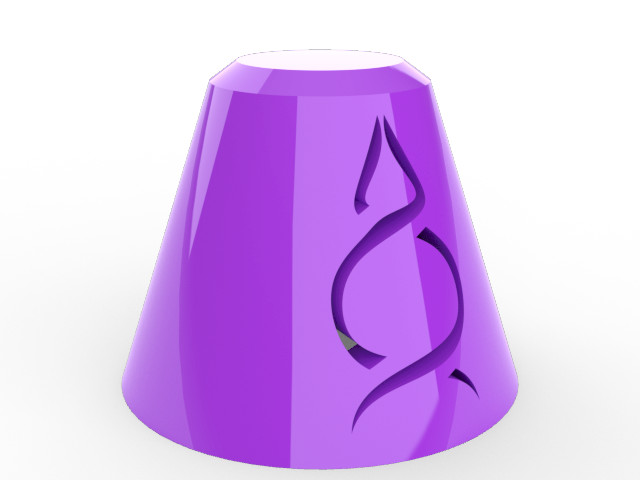
Soul Token: Reveals a souls position on the map
- Dice Sets (Per Player)
-
Set includes 2 six sided dice, a 20 sided die, and a Diel Die
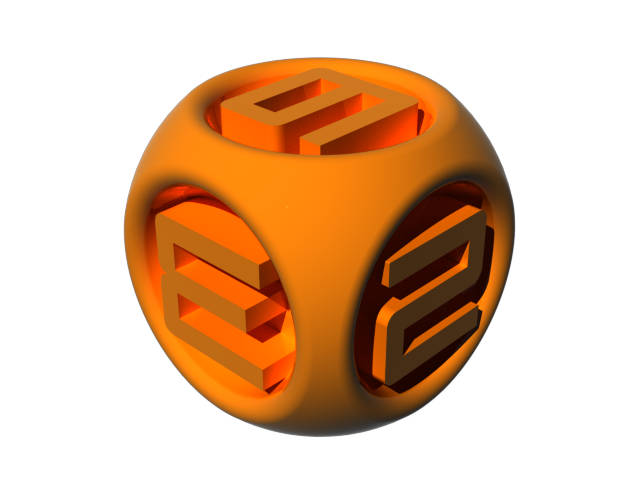
D6: A die with 6 faces
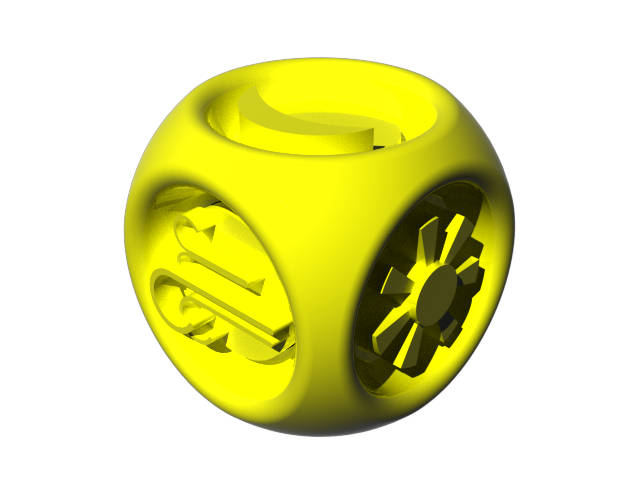
Diel Die Controls the day, night and storm cycle
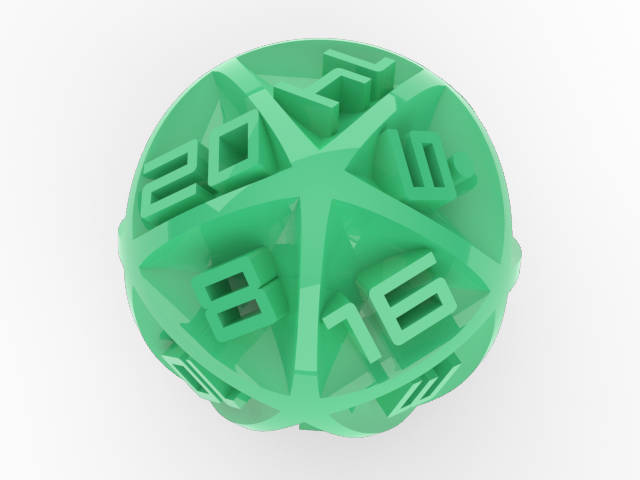
D20: A die with more faces!
- 3D Kipuka Map
-
This is the field of play where the souls move, battle, and claim

- Field Mat
- This organizes the play by keeping track of which cards are in which territory
- Card Decks
- One deck per player. Both must be built with 30 cards and should meet the criteria listed at Building Decks
- Phone Stands
- These make scanning the QR codes nice and easy
- Game Rules
- You are here. These are avaliable on the card binder, kipukas.cards, for digital viewing or printing.
- Mini Dry Erase Boards (and Pens)
- These are for used for aspects of attack and defense
- Friend
-
We can’t provide this one. We measured, they don’t fit in the box.
Even if we succeeded, “Friend” would be a strong word.
Conventions, Courtesy, and Quarks
Kipukas relies on cards, small game pieces, a game board, and a mat for play and organization. The cards we produce do not include the play mechanics on the card as, to my knowledge, all other card companies do. Instead, we let the artist’s work be as big and beautiful as possible. In fact, we do not even let the name of the card get in the way of showcasing artists talent. Instead, we have made the play data for every card we produce accessible from the QR code printed on their back.
Example Card

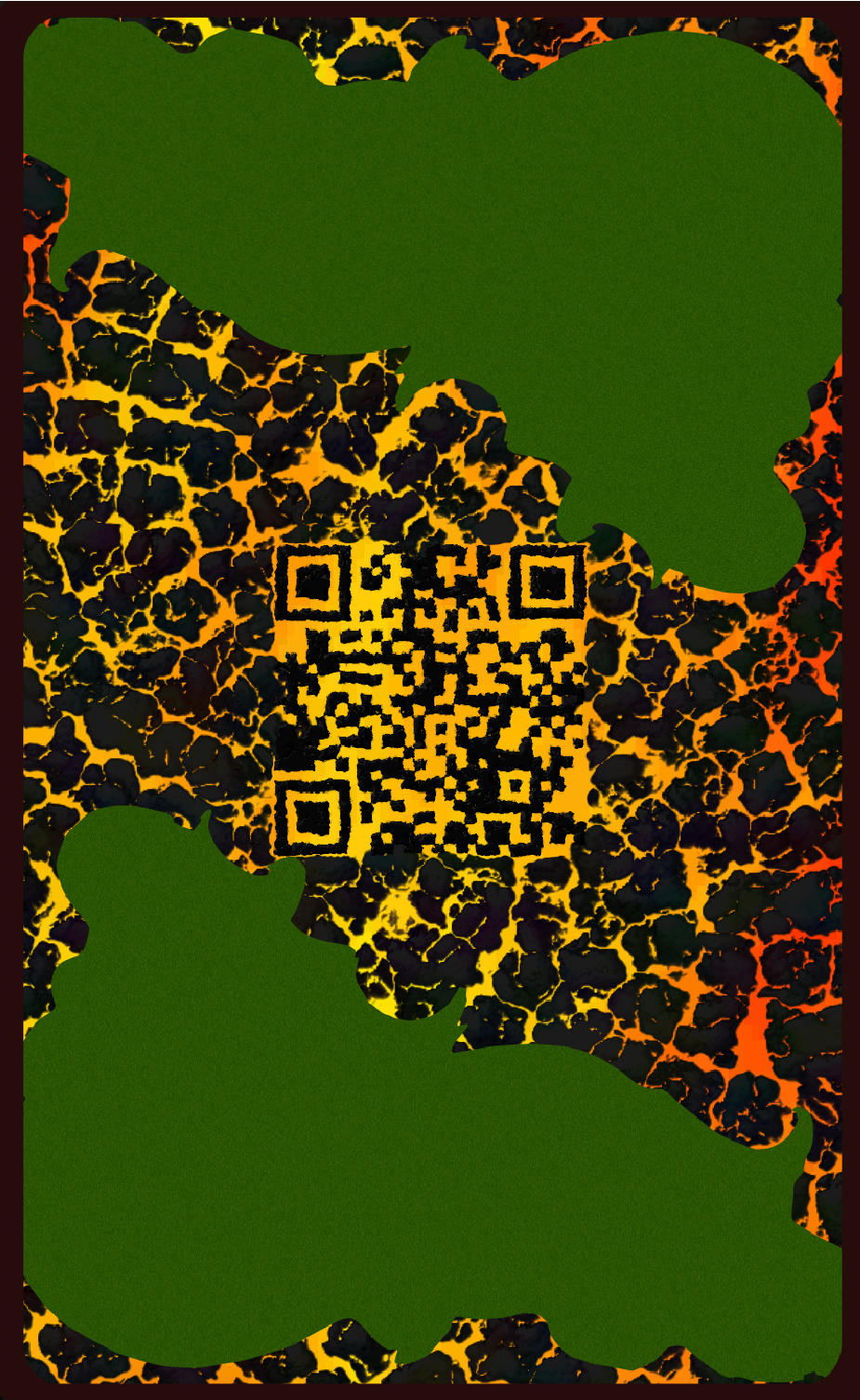
(above) Front and back of a the Kipukas card ”Hilbert: King of Avian Frogs”.
QR Codes
In order to make this process as user-friendly as possible, we have included a private site only QR scanner which runs locally on your device on our web app. At kipukas.cards click the QR button in the tool bar, accept the privacy statement, then a camera will pop up. Give the beautiful face presented a gracious smile and show a card to the scanner. It will take you to that cards play data page. If for some reason you need to cancel scanning, you can click eye in the top left of the scanner to close it. This scanner only works for QR codes which pattern match against kipukas playing cards. The scanner will work best during a game if your device does not sleep during the play through. It is optional or recommended use or install a caffine mode for this purpose. Keeping your device plugged in during the game is also recommended. I hope you don't mind terrible selfies, because I screenshot one to show how this works. BTW I am holding the card way too far away on purpose for the shot. The QR code should take up most of the camera frame.

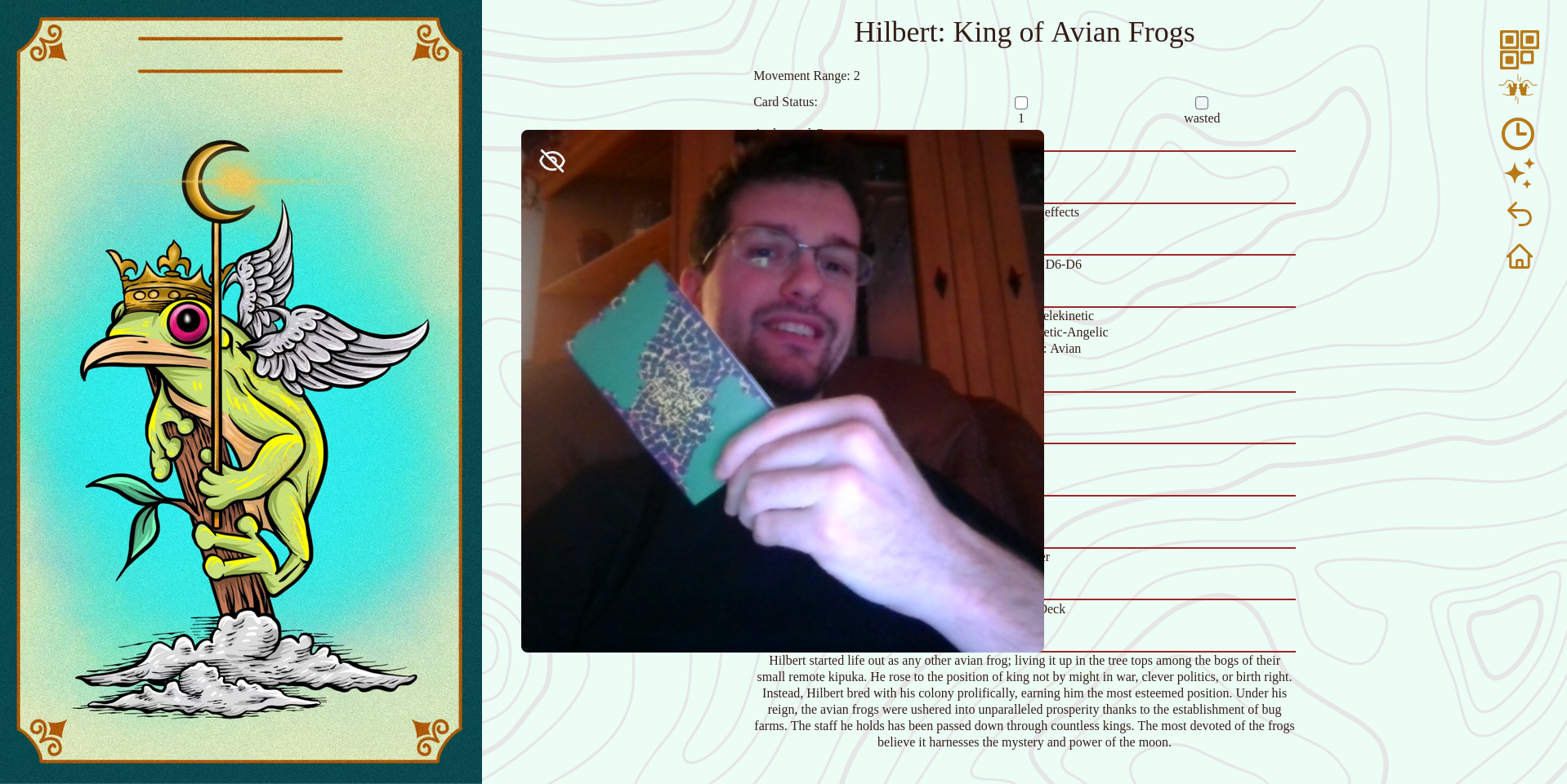
A last note about the cards. The center of the edge on the cards is colored to reflect
their archetypal adaptation. This is a unique feature that allows players to see what
type of card is on its way. Take advantage!
Kipukas uses many small game pieces to keep track of play. All pieces should be
treated as CHOKING HAZARDS and the game content is for people 14+ years of age.
Do not let children under or pets play with the pieces.
At all times, it is the responsibility of the legal guardians to keep all pieces out
of reach of children and pets.
By continuing to play with our products, you acknowledge that Kipukas accepts no
liability for damages incurred by the misuse of our products.
The following image shows an example of our game board, a.k.a. the map or kipuka. For your convenience, it is labeled with token placement and boundary line nomenclature.

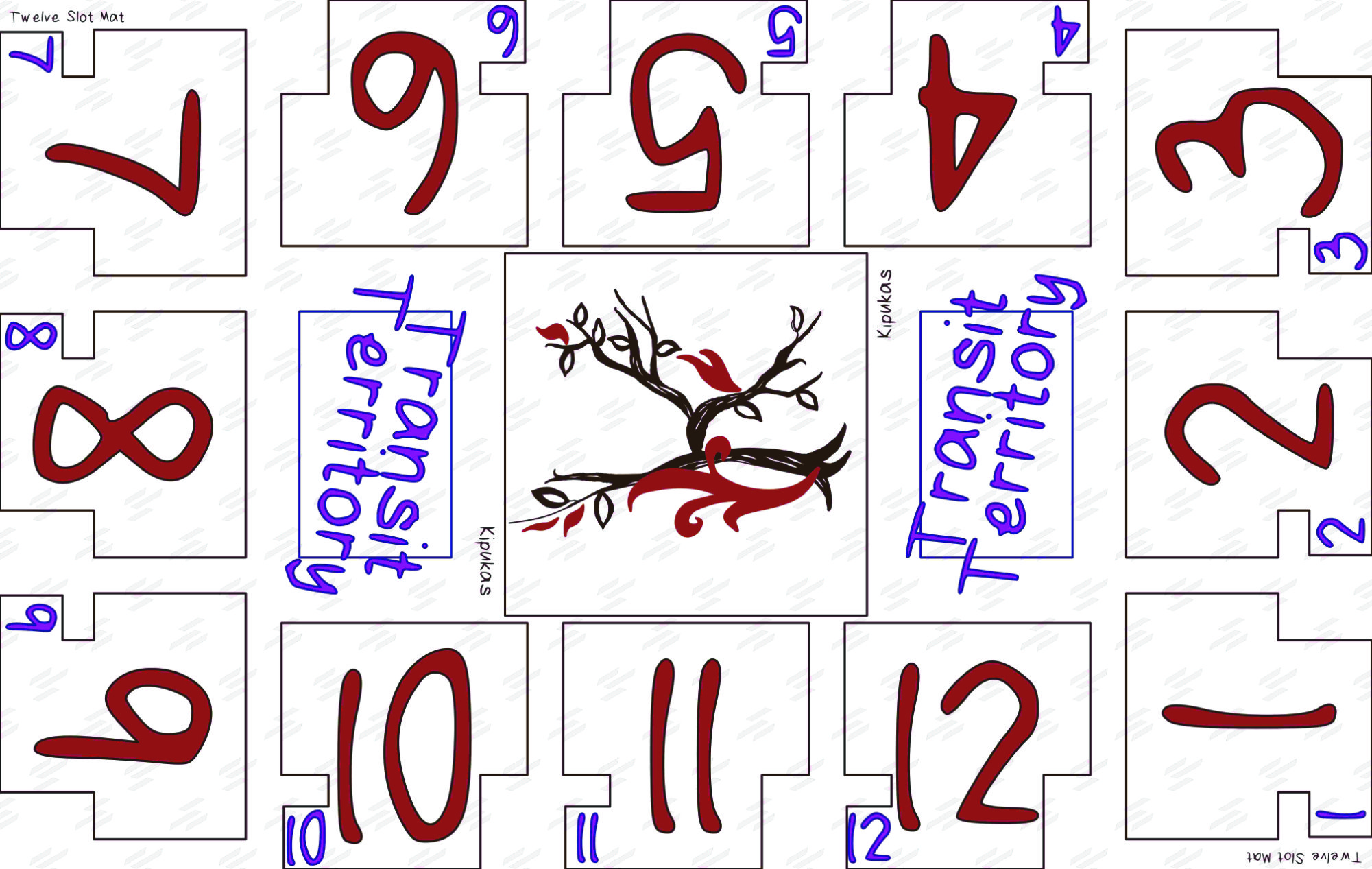
Note the numbers on each base camp stand. This is the reference for that territory. The following is an example of a mat that would be paired with the above map.
The slot numbers reference the territory numbers on the board. When cards are played, they are played on these slots. Once a soul token moves between territories, their corresponding card is moved from the old territory slot to the new territory slot on the mat.
Game Setup
- Place the 3D map on the outlined square printed on the mat. Gather and place the required game pieces next to both players.
- Unlock your device, turn on caffeine mode, then visit kipukas.cards (ideally on a chormium based browser) with your devices camera facing you.
- Each player declares an affinity for one archetypal adaptation for use over the duration of the game. Say “The blank are my crux.” where blank is an archetypal adaptation. For example, “The brutal are my crux.” (See Affinity for more information) (For a list of archetypal adaptations, see Character and Species (Soul) Cards: archetypal adaptations)
- To determine who places first, see if any player would prefer to place first and play second. If either everyone or no one wants to place first, both players roll a 6 sided die. The higher roll places first and takes their turn second within a diel cycle roll for the duration of the game.
- One player takes the first territory by placing their capital, the other player then takes a territory with their capital. After this, each player makes claims with base camps until both players have 3 territories. This will leave 2 to 4 territories unclaimed, depending on the map in use
- Place the personal effect card that you will be using in front of you. You are not obligated to reveal what it does until you use it. If you do not have a personal effect card, use the default effect. (See Personal Effects for more information) Note: Founder’s Deck and Starter Decks do not include personal effect cards
- Respectfully shuffle each other’s decks, then hand the deck back to its owner. DON’T BRIDGE THE CARDS! Slide the cards along one another, lifting then placing small groups to change the card order. Remember that these cards are fine art and should be respected as such!
-
Draw three cards from the top of the deck
NOTE: This is your absolute max hand size. You cannot have more than three cards in your hand at any given time. Also, you cannot play more than 3 cards from your hand within a diel roll - Begin the game on the turn of the player who placed their capital second. The first diel cycle is always day, followed by night. In this way, both players get the chance to play cards and refresh their hand once before diel cycle rolling starts
Diel Cycle and Turn Advancement
If you followed along up to this point, you should now be ready to play the
game! Let’s go! The first thing you need to do is roll the diel die. It has faces
that show a sun (day), a moon (night), and lighting (storm). This roll
dictates the actions you can take over the course of this turn (one player’s
actions during the diel cycle), as outlined below. Numbers indicate the
sequence of actions.
Each diel roll, and its turn actions, apply to all players.
Day Roll (Sun)
- If enemies are in your territory, choose to attack or retreat (See Attack, Defense, and Retreat as well as Maps (The Kipukas): Claiming Territories: Contention for more information)
- Once you have resolved enemies, if any, in your territory you may skip the rest of this diel cycle if you don’t see a good move to make.
- After addressing contention, you can place one card into play. This can be a terrain feature, trap, or soul in revealed or unrevealed position on a territory you control. (See Card Variations for more information)
-
Reveal anor 1 move souls to adjacent spaces within their movement
range if desired (See Maps (The Kipukas): Movement for
more information)
- Upon movement into a territory where your opponent has unrevealed cards, your opponent will have you roll a D20 for trap activation. If one of these cards becomes activated, deal with the consequences. If no cards are activated, roll for detection. (See Card Activation Sequence and Trap Cards for more information)
- If the transit or base camp stand that you moved onto is occupied, then attack the soul(s) in that space. You may wait until other souls have moved into the space to attack, but you must attack before the next diel cycle roll. (See Attack, Defense, and Retreat for more information)
- If the space occupied is a base camp, and it is not under contention, place or replace a base camp token on the territory. (See Maps (The Kipukas): Claiming Territories for more information)
Night Roll (Cresent Moon)
- If you so desire, you can discard 1 card from your hand.
- Draw cards to fill your hand back to three cards if your hand is diminished.
- You may choose to craft any items, then play or hide them. (See Item Cards: Crafting for more info)
- You may play a sabotage card before the night concludes. (See Sabotage cards for more info)
Storm Roll (Wind)
Take Shelter! If a storm is rolled, any card caught in it i.e. not within a capital or base camp will take KEAL means damage and any downed cards will be removed from play. (See KEAL Means Damage, Healing, and Tolerance for more information) Storm rolls apply to both players
Card Variations Used in Game Play
In Kipukas there are several types of cards that compose a deck which are listed below with a qr code link to an example of the variation. Each has its own section to describe their specific role in the game play. Click the QR codes to see a representative member of each card type.
Allele
These are the slight variations between cards. Some variations are planned, while others are spontaneous. These may include changes in presentation, play characteristics, etc.
What modifies a roll?
-
Apply effect to all battle rolls:
-
Affinity Type If the card’s archetypal adaptation matches the player’s
declared affinity type, apply the bonus
-
Apply effect to KEAL means rolls:
-
Habitat When the geography of a territory matches a soul’s
habitat
apply the primary habitat bonus; otherwise, check if the secondary
bonus applies.
-
Archetypal Material Check if the archetypal materials
interact using
the fists tool on kipukas.cards. If so, apply modifier to attack roll.
-
Apply effect to final attack rolls:
-
Archetypal adaptions Check for interactions in the fists tool on kipukas.cards.
Apply the modifier shown to the attack roll.
-
Motivation Check table for motives modifier interactions.
-
Apply effect at direction of card:
-
Terrain Feature Within a territory where a terrain
feature has been
staked, roll modifiers are applied, where applicable, to any card
currently within the territory.
-
Traps Once triggered, certain traps attach to soul(s) then
modify
future rolls. Specifics dictated by the trap card in question.
-
Items Players may attach certain items and crafted items to a
soul,
which modifies that card’s rolls according to the specific card or
recipe.
-
Personal Effects Play specifics vary with the personal
effect, but generally target one player globally through the game.
Card Activation Sequence
- Trap cards activated
- Trap cards detected
- Terrain feature card
- Revealed entities
- Unrevealed entities
Character and Species (Collectively Soul) Cards
These cards are the soul of Kipukas. Species cards tell the story of a species as a whole, while characters tell the story of an individual within a species. Until tameability is fully implemented, no playable differences between character and species cards exist. Throughout this guide, we refer to these as souls or soul cards when the context applies to both characters and species. Most souls have the ability to move and interact with traps and items, unless otherwise stated. (See Trap Cards and Item Cards for more information) We encourage you to develop story lines for your favorite cards to make the game more imaginative and personal. These should be pliable details each player develops through play in order to form the soul’s personality. If you learn by example better than explanation, read Typing summary and example below first and check our website kipukas.us for game play through videos which I will post as interest grows.
KEAL Means
Each card has a unique set of qualities used in attack and defense called KEAL means. These must be injured or broken to defeat the card. (See Attack, Defense, and Retreat for more information) If a KEAL means becomes injured/broken, then the card which did so may not attack that KEAL means until it becomes healed. Other souls may; however, attack the injured KEAL means. Each part is composed of a material with archetypal qualities and is influenced by the habitat of the soul. By the way, KEAL stands for Keep Everyone ALive and emphasizes the importance of every card you play.
Archetypal Material
KEAL means represent some physical trait or object that helps represent the soul it belongs to. These are all made of some manner of matter or energy, and can be thought of as materials. These materials share the same archetypal adaptations presented in the soul type chart. The major difference is that a card’s soul type represents its general adaptations, where KEAL means specify the card’s individual preferences/traits. Where each card only has one archetypal adaptation in its soul type, each KEAL means may have up to three archetypal adaptations. These bonuses stack and counteract each other, where each archetypal adaptation of the attacking K. E. A. L. means interacts with each adaptation of the defending K. E. A. L. means.
Habitat
This is where the soul was created to live. Group effects maybe applied based on habitat. Bonuses are applied to KEAL means bouts. See the next page for habitat types and effects also see Maps (The Kipukas): Geography.
- Mountain
-
Primary Effect: Add 2 to mountain dweller rolls
Secondary Effect: Take two from plains dweller rolls - Forest
-
Primary Effect: Add 2 to forest dweller rolls
Secondary Effect: Take two from plains dweller rolls - Plains
-
Primary Effect: Add 3 to plains dweller rolls
Secondary Effect: Heal revealed souls in territory 1 KEAL Means per 2 turns rested, when not under contention - Water
-
Primary Effect: Aquatic dwellers move in water without boats or rolling to swim
Secondary Effect: Other souls swim by rolling 2 D6 and obtaining 2+2 - Heavens
-
Primary Effect: Typically have high movement ability
Secondary Effect: Heavens dwellers may fly over spaces without interacting with the cards below - Volcanic
-
Primary Effect: Volcanic dwellers are immune to volcanic area damage
Secondary Effect: Souls take 1 KEAL means damage once per diel cycle - Underground
-
Primary Effect: Underground dwellers can travel through underground tunnels
Secondary Effect: Undergroud dwellers can make underground tunnels - Digital Cloud
-
Primary Effect: Occupy no space in territory
Secondary Effect: Are unable to take or hold base camps or capitals - Nomad
-
Primary Effect: Habitat effects do not apply to battles with nomads
Secondary Effect: Nomads swim by rolling a D6 with the result of 1 or 2
Soul Type
This is the predominate structure of the soul. After inflicting the necessary number of injuries on the card, you must best the card in a crushing final attack. This pits the inner-self of each soul against one another. Each soul possesses an archetypal adaptation and a motivation which effects the roll of a final blow attack.
Archeptypal Adaptations
These control the general physical makeup of the soul. Group effects might apply based on the soul’s genetic makeup. Use the fists tool on kipukas.cards to determine the typing match-up. This tool also supports archetypal materials type match-up determination and the descriptions on the next

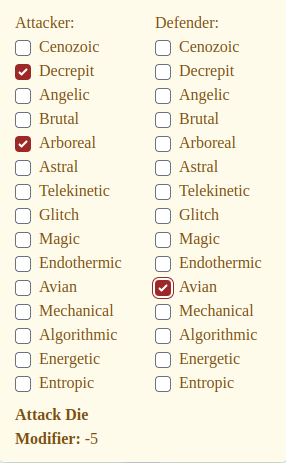
Archetypal Adaptations Overview
- Cenozoic
- Conforms to modern era evolution norms
- Decript
- Barely held together, hardly alive
- Angelic
- Beautiful, graceful, heavenly
- Burtal
- Conforms to modern era evolution norms
- Arboreal
- Look as if they live among the trees, Tend to be large, hairy, and predatory
- Astral
- Look as if they live among the stars, Tend to carry interesting adaptations
- Telekinetic
- Physical traits tend to receed in favor of greater mental control
- Glitch
- Genetic mishaps. Favor Fringe, goth, angsty, punk, anor techie flair
- Magic
- Spiritually adept with abilities to sense or manipulate the ’supernatural’
- Endothermic
- Excessively cold blooded and require outside heat to sustain bodily reactions, Tend to steal enough heat to freeze their surroundings
- Avain
- Of, relating to, or characteric of birds
- Mechanical
- Some call them robots, but these souls are as dependent on their chassis as people are as dependent on their bodies.
- Algorithmic
- Machine sentient intelligence comes in many forms, but these are not dependent on any particu- lar chassis.
- Energetic
- Bodies consist of highly energized matter, the total of their body might be split between dimensions or planes
- Entropic
- Embody chaos in one of its infinte forms, life is mearly an empirical quantitation
Motivation
This is the other type considered for the final blow attack. Motivation reflects the soul’s purpose and drive. Motivation is broken into several groups, the first three show what the soul will fight to preserve and have bonuses as follows

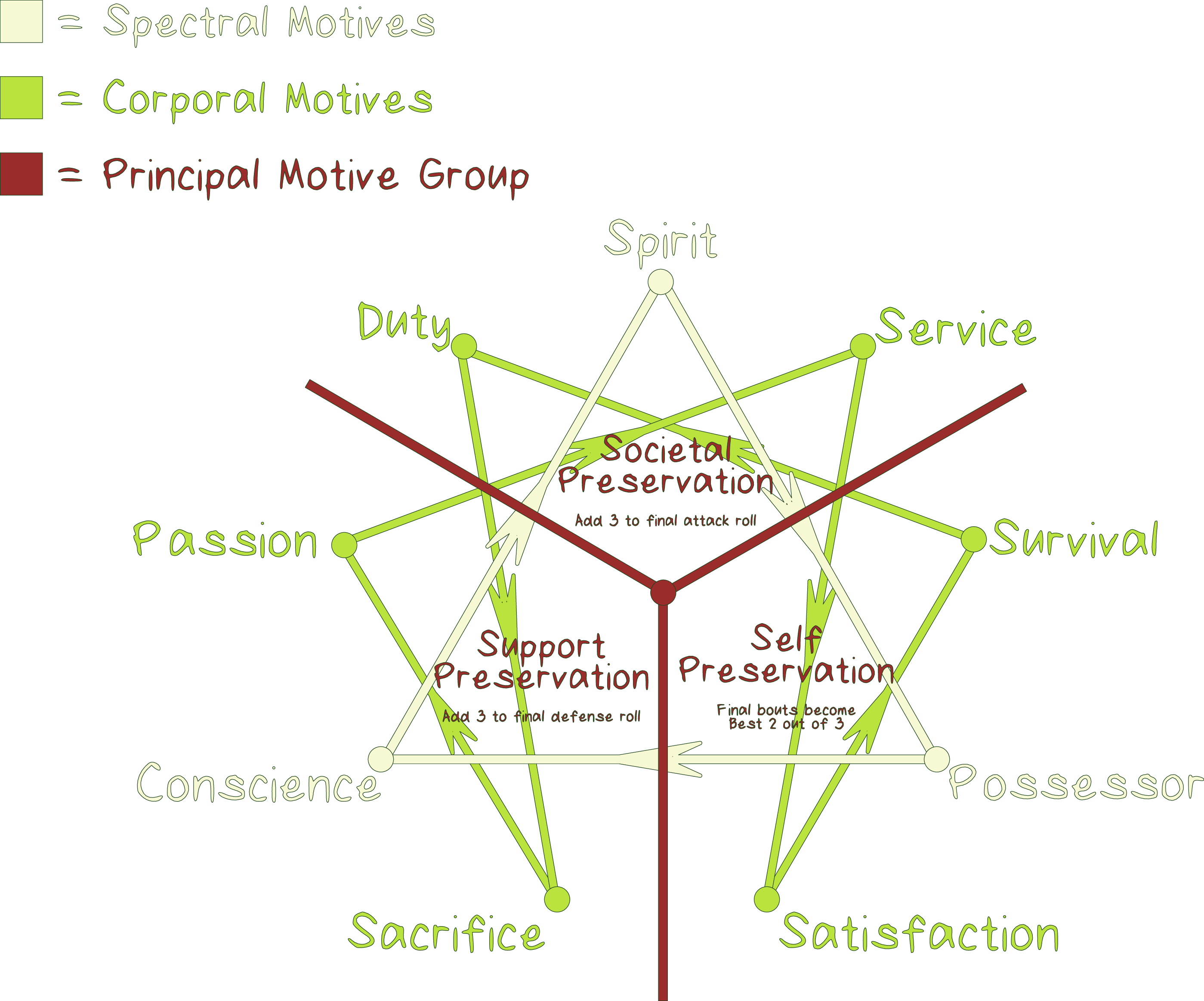
Tameability
α mechanic that applies only to species cards Some species are easy to work with while others are quite persnickety. The tameability scale represents this phenomenon. Other souls and equipment may need to be played in order to wrangle these species. 9 means the species is untameable (no amount of bonuses will tame them) while 0 means the species does not require taming. A species becomes tame once player affinity and effects are applied. At this point, the soul will be under the full control of the player. If the player chooses to play the creature untamed or the opponent reduces your control of the creature below its tameability then the creature becomes under its own influence. See Rouge Species below. Additionally, some cards can be played at a lower tameability rating without going rouge. However, not all of their KEAL means or play effects will be available for use at the lower affinity. Instead, they will require a higher player affinity to use these awesome abilities.
Rouge Species
Each day, before either player’s turn, you must roll for the rouge species’ movement. If the territory it moves into is occupied by souls you or your frenemy controls, it must attack all souls in the territory until either it or its enemies within the territory are defeated. Either player can choose to attack either a rouge soul or the other player’s souls during their normal or both should they have the cards to do so during their normal turn. Souls on the top of the card stack will be attacked first. If it defeats all soul cards in the territory, remove the claim token on the territory. Rouge species must roll against trap and terrain feature cards when applicable, then reap consequences as well as benefits. Rouge entities must be revealed. Failure to do so will result in an immediate victory for the opposite player. If a rouge soul manages to defeat a player, the other player must defeat or tame the rouge soul. Failure to do so will result in a dual defeat.
Taming Rouge Species
Either player can attempt to tame a rouge soul and bring it under their control. This will require boosting player affinity higher than the tameability of the soul using items and the player’s base affinity level. This is the same manner that species which require taming are placed normally. Taming occurs at the begining of the day cycle, before either player makes other moves.
Affinity
The ultimate goal of affinity is to be a long term game play strategy alongside loyalties attached to the soul cards. When a full Kipukas phone application is developed, your affinity for certain types will increase as you declare them at the start of a game. Likewise, loyalty will increase a with the number of times that you play the soul card. (This is limited to once per day, except at tournaments, which will be once per match.) Loyalty will also increase if you came to own the card through an incubation card. When loyalty is high, the card will not need to be tamed. Until the app is developed, there will not be a loyalty tracker. In its place, players will add 1 to attack and defense rolls made for their declared type.
Attack, Defense, Retreat, and Healing
Defeating a Soul
In order to defeat a soul, you must first weaken them by injuring or breaking their KEAL means. This is accomplished by attacking with your soul’s KEAL means. Each soul has a certain KEAL means tolerance that it can take before becoming vulnerable to a final attack. See KEAL means count below. Modifiers are applied based on the KEAL means being used. (See Character and Species (Soul): KEAL Means for more information) After an unsuccessful blow, the player loses their ability to attack with that card for this diel cycle. On the defender’s next turn, they must choose to attack or retreat. If an effect says souls take X damage, then the damage will apply to either the KEAL means or the final blow. If it applies to the final blow, the card becomes wasted and is discarded without a final attack.
KEAL Means Damage, Healing, and Tolerance
As souls accrue injuries (lose KEAL means), their tolerance for new injuries
becomes smaller. Injuries usually occur one at a time, but some can inflict
multiple at once. See below for an example. Some can even defeat souls
without contest under the correct conditions. Injuries should be noted on the
KEAL Means Damage Tracker on the cards page on kipukas.cards. When any card’s
KEAL means count reaches the last number, they become downed. This means they can’t
take any more punishment and become vulnerable to being engaged in a final
attack. If the card either survives a final attack or is not engaged in a final
attack, it won’t be able to engage in attacks. As well, its movement speed is
halved unless it is healed. (See Maps (The Kipukas): Movement:
Moving Downed Souls
for more information) If a soul is caught exposed during a storm they will lose one KEAL
means
or if they are downed they will be wasted.
Souls can be healed by other souls, terrain features, or items with a healing
ability. Unless otherwise stated, healing occurs during the night. The soul
must be within the same territory as the healing entity or within its specified
healing range. Healers can only heal a certain number of KEAL means with
in a certain number of diel cycles. Most healers have the ability to heal
themselves under the same conditions mentioned above, unless they are
downed.
KEAL means tracker on kipukas.cards

Toolbar option to reset the KEAL state of the cards (use after your game is complete
Methods of Attack Against KEAL Means
- The default will be dice based attacking. The attacking die type will be determined by the attacking card. Material and Habitat bonuses may apply. Check the typing guides for applicable bonuses
- Some cards will support mini-games where appropriate. (i.e., a thief themed card may involve a timed lock picking competition)
Methods of Defense Against KEAL Means
- The default will be dice based defending. The defending die type will be determined by the defending card. Material and Habitat bonuses may apply. Check the typing guides for applicable bonuses.
-
When defending against mini-games there are a few options
- Beat them at their own game
- Attack them before they can attack you
- Engage them with terrain features, traps, and items to defeat them without playing the mini-game
Final Attack
Once a soul’s KEAL means count is down to 0, it may be engaged in a final attack. This must be won in order to waste the soul under attack. This is always two D20s rolled against each other. The resulting rolls are adjusted based on archetypal adaptation and motivation. (See Character and Species (Soul) Cards: Soul Type for more information) If the attack is lost, then the attack comes to a close. If the attack is won, the defender is wasted. (See Discarding Cards and Deck Runout for more information)
Brawl in the Event of a Tie
If an attack results in a tie (i.e., the values of the attack and defense dice rolls after modifiers are applied are equal or if the mini-game does not result in a clear winner), the souls will engage in a brawl. In order to complete a brawl, both players need to look at their soul’s four digit brawl sequence. The brawl sequence consists of letters, numbers, dashes, and underscores. In order to determine the victor, players compare the characters from left to right according to the table below:


Retreat
If you are in a badly losing fight, retreating may be beneficial. It can allow you to regroup and redeploy to a more favorable position. Players may retreat from an attack after their opponent has stopped their attack, but before launching a counterattack. At this point, the opposing player decides if they let you go, or they challenge the escape. If the opposing player wishes to prevent the escape, the escapee must win a roll of 2 D6 against a D20 for each soul they wish to retreat. After these rolls, for each success, you get to decide which soul to retreat. Downed souls may only retreat with the company of a not downed soul.
Attack Progression Example

This is our old friend hilbert!
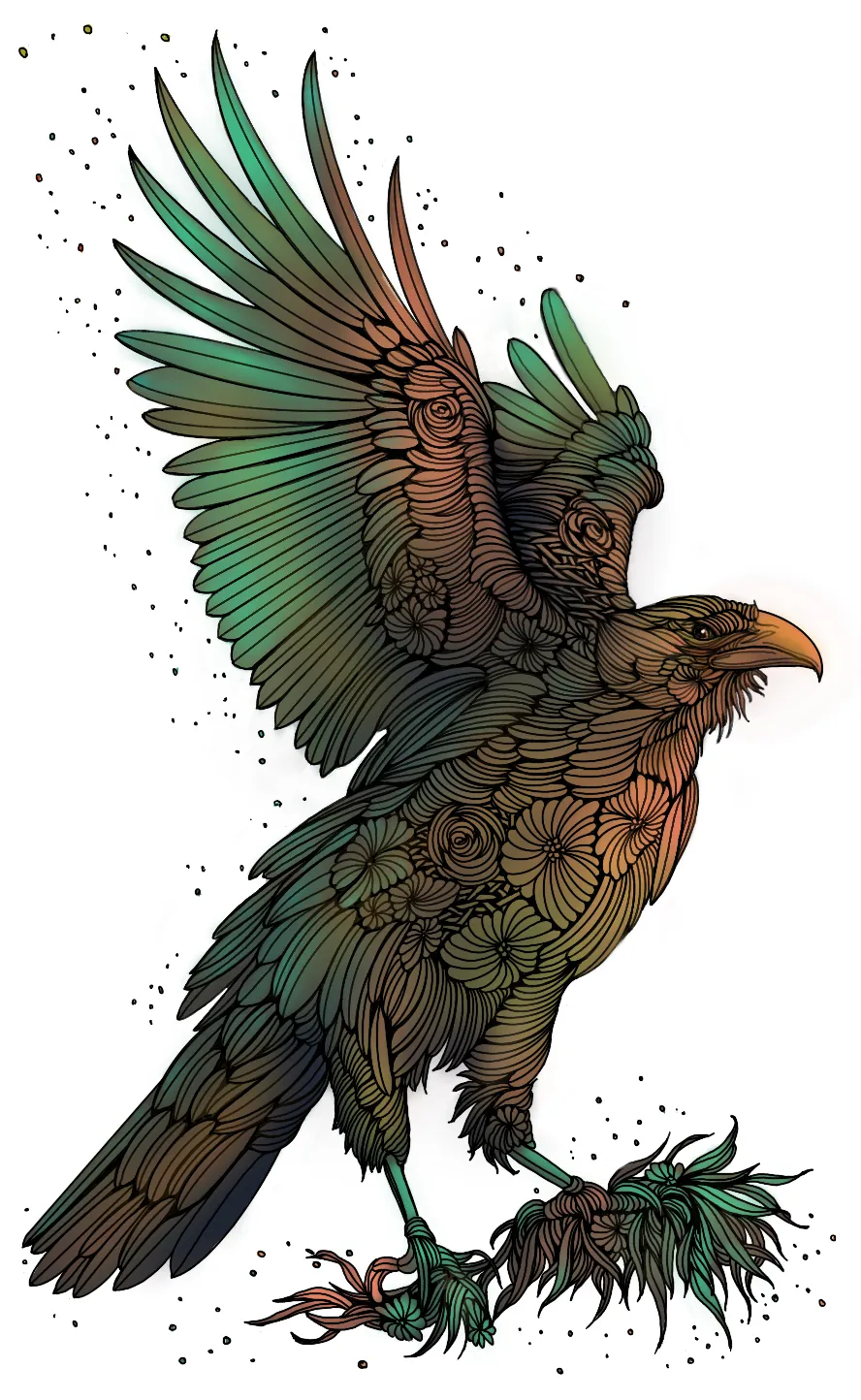
Let’s pit him against one of the myrthvither raven species members
Let’s go over the scenario
Currert Geography: Forest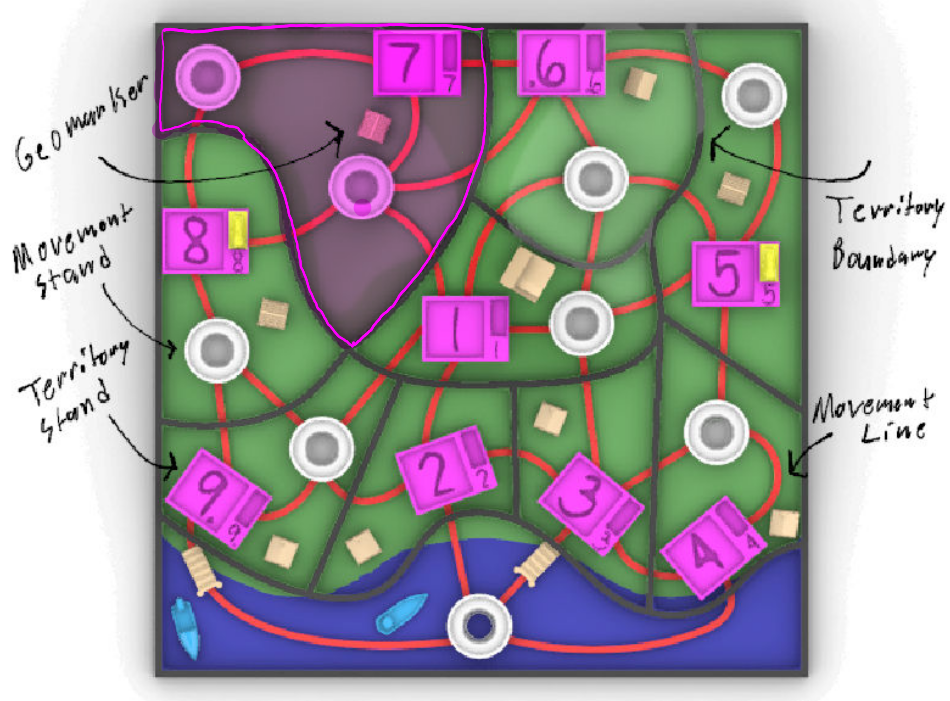
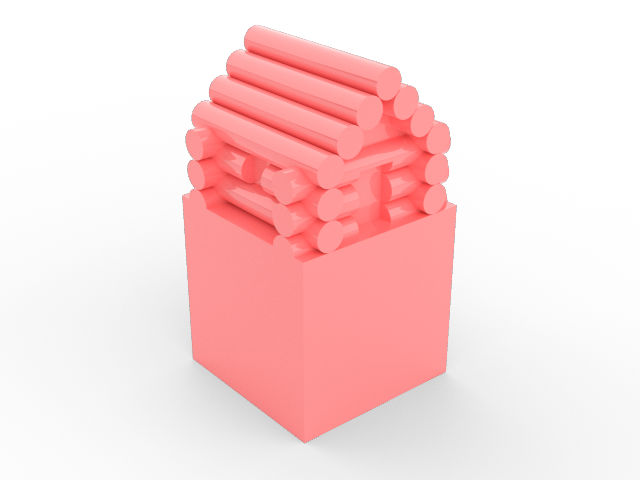
This bout is taking place in territory 7 (hightlighted with pink) which as indicated by the log cabin is a forest territory
Defending Card
Hilbert: King of Avian Frogs
- Affinity Declared:
- Avian
- Archeptypal Adaption:
- Avian
- Game Effects:
- None
- Motivation:
- Passion
- Die Roll:
- D6-D6
- Keal Means:
-
- Crescent Staff:
- Telekinetic
- King’s Mojo:
- Energetic-Angelic
- Majestic Break:
- Avian
- Habitat:
- Forest
- Card Status (health):
- 1
Attacking Card
Myrthvither Raven
- Affinity Declared:
- Decript
- Archeptypal Adaption:
- Avian
- Game Effects:
- Opponent must roll std. detection before engaging in a keal means bout. It is wasted if it loses the bout. Reveals cards in a territory as it moves into the territory. These cards can be reset to unrevealed once they are not in the same territory as Myrthvither Raven.
- Motivation:
- Satisfaction
- Die Roll:
- D6
- Keal Means:
-
- Scout’s Vision:
- Avian-Cenozoic
- Symbiont Barrage:
- Decrepit-Arboreal
- Habitat:
- Nomad
- Card Status (health):
- 0
Scenario Walkthrough
In the above examples, we have our character, Hilbert, locked in battle with a species card called the Myrthvither Raven. The defending card’s (Hilbert) archetypal adaptation matches the player’s declared affinity, so the card receives a bonus to all rolls made by the card. The first attack launched will be a KEAL means attack. The habitat of this card is forest and the battle, according to the geography, is taking place in forest. This gives the defender a bonus to each KEAL attack made in this territory. Unfortunately, the defender is a nomad, which neutralizes this bonus. In this case, neither cards habitat's secondary effect kicks in. Next, each player chooses a KEAL means and writes it on their grease board. On the count of three, players reveal their choice to one another. Don't worry we will get back at the opponent.
Scenario Walkthrough
Hilbert will use his Majestic Beak to defend against the Raven's Symbiont Barrage, and the bonus would be checked against the fists tool on kipukas.cards (See Soul Type: Archeptypal Adaptations for more information.) anor using the provided typing table documentation if you perfer a manual check. A key thing to note is that each type has a different effect on the other type's attack power, up to three per type positive or negatively. This can really influence the result of the bout. In this case, the attack die modifier is an decrease of 5. If the attack wins (which it has a very miserable chance of), the defender’s (Hilbert) KEAL means count is reduced by one and the attacker has the opportunity to push on and attack again. This continues until the attacker loses, chooses to stop the attack, the defenders KEAL means count drops to 0, or the defending opponent attempts a retreat for all the cards in the conflicted territory. Hilbert rolls with 2 D6 dice where as the Myrthvither Raven rolls with only 1 D6. This coupled with the type advantage of Hilbert's KEAL means ensures his victory in this defense. So, the turn ends for the attactker.
Scenario Walkthrough
The Next day the shoe is on the other foot, so to say. Now Hilbert is going to attack the Myrthvither Raven. Normally, this would involve the reverse role of the previous scenario, but the Myrthvither Raven is special. It modifies how the opponent can engauge it at the expense of 0 KEAL means. This means if it losses once, it is wasted. In order to face the Myrthvither Hilbert successfully roll the standard trap detection to find the raven. Assuming this is successful the raven will likely be defeaded due to being weak compaired to the almighty King Hilbert. It is a mear scout after all. We could assume it was wasted. However; let's pretend that the Myrthvither Raven is now equipted with some item that gives it one additional K.E.A.L means to lose. This would mean that it is now downed and vulnerable to the final blow. Now Hilbert engages in the final attack. Given that both cards have the Avian archetypal adaptation neither is at a disadvantage since adaptations of the same type usualy do not interact. Additionally, neither motive has an advantage against the other. However; the Myrthvither Raven is in the Support Preservation triad with it's motivational type with would give it a bonus of 3 to it's final defense roll. Hilberts motivational triad ability only applies in defense, so it will not kick in here. If the final attack is successful (always two D20 rolled against each other) then the defender normally gets removed from the game (See Discarding Cards and Deck Runout for more information). If at any point the sum of the rolls and bonuses were tied the battle match would end with a brawl. We will assume Hilbert won the final bout and end the scenario here.
Terrain Features
These cards modify territory either to benefit or hinder souls in the area. Some may be placed at random across the entire board, while others may offer controlled placement. These may target your opponent’s territory claims, your territory claims, unclaimed territories, or any territory regardless of status. Only one terrain feature can be in play on a territory at a time. Territory features cannot be placed within a territory if it was taken this play. Unless otherwise specified, a new terrain feature played in a territory will replace the terrain feature card currently in play on the territory. Some of these cards must be revealed because their effects are instant and continuous. Unless stated otherwise, most terrain features are revealed at the discretion of the claim owner. If a section is claimed with an unrevealed terrain feature, you must reveal that feature to your opponent. These cannot be moved by a soul unless otherwise stated.
Random Territory Selection
Some cards apply an effect to a territory via a method of random selection. In order to properly select this territory, roll a D20 (or a D12 if you own any). If the number rolled is within the highest number on the board, then apply the effect to that territory. Otherwise, re-roll until the roll is less than or equal to the highest territory number. Alternatively, a random number generator is a good fit here. There are a bunch of free ones that you can use if you prefer
Trap Cards
Lay these in territories to activate as entities move between and through territories. These require a reasonable soul to lay them unless stated otherwise on the card. Upon moving a soul into or within a territory with frenemy unrevealed cards, traps must first be rolled against to see if any are activated. If the trap is activated via the conditions listed in the trap card’s description, then apply its effects against the enemy attacker on top of the card stack. If the trap is not sprung, roll to determine if the trap is detected. If detected, remove from play; otherwise, the trap will attempt to activate as the enemy moves through the territory where it is placed. Most traps activate on a D20 roll, which is why players must always roll when entering a territory under with opposing unrevealed cards. Traps are detected if a 1,2,7, or 8 is rolled. Some very rare cards may have the ability to change these numbers, so be careful! Once laid, these cards can be moved by a soul unless otherwise stated. As always, the reasonability of this action can be challenged. They remain unrevealed during movement, but the opponent can now deduce that it is either a trap or an item card, as moving terrain features and souls via this method is extremely rareSabotage Cards
Play these cards under the cover of night and mess with your opponent’s next turn. Sabotage card effects can target a wide variety of play aspects, from temporarily disabling mechanical souls to blowing up terrain features. Sabotage cards can only be played once a night. Their effects are usually applied to the next day roll; however, cards can change this if specified. Unlike most other cards in Kipukas, the effects of sabotage cards tend to be fixable under specific conditions or after a certain number of turns. Also, sabotage cards have a higher likelihood of success when compared to traps. Unlike traps; however, sabotage cards have consequences for the player who attempted to sabotage if they fail. This can be anything from jailing souls for a number of turns to wasting the soul who attempted to plant the explosive. As such, these cards have three aspects important to game play: Success Criteria, Successful Sabotage Result, and Failure Consequence. Typically, sabotage cards will state rolling a D20 against two D6 as the activation criteria.
Item Cards
These cards are used in crafting. Crafting provides potions, equipment, and other boosters. A single item will have far less power (or no power) than a crafted item. Furthermore, the more items used in a craft, the more powerful the final crafted item will be. Unless otherwise stated, items can be moved unrevealed by souls. Generally, if an effect or attack with an equipped item fails, you may try that effect or attack again during the next diel cycle. If a crafted item emulates another card type (i.e. trap card, soul card, etc.) please review the respective section on how to play the card. Items and crafted items are generally not destroyed, but rather dropped when a soul equipped withthem is wasted. If a territory is under contention when this happens, each player chooses a suitable card to attempt to grab the item. A KEAL means bout will ensue where the victor equips the item and the loser takes KEAL means damage. (See Attack, Defense, and Retreat for more information) If only one player has a suitable soul(s), the opponent can only defend the dropped item, not equip it. If neither player has a suitable soul in the territory, the dropped item is ignored until a suitable soul move into the conflict or the contention is resolved.
Crafting
Crafting an item takes a full play and involves using two to three item cards (see recipes below). If a crafting recipe is being guessed (competitors and refs can tell you if you are correct) and the guess is wrong, then discard and draw a new hand. Once an item is crafted, you can keep the cards together to represent that item, or if you prefer, you can submit the recipe to Kipukas then purchase a single card representation of the crafted item when available. Crafted items may enhance cards from other categories or produce cards from other categories. Once applied to a card, an enhancement can be moved or removed, unless otherwise specified. Crafting creature cards is the only way to have more than a single copy of a creature in your deck, but you can only have one natural soul card and one crafted soul card. There will be no exceptions to this rule. Once an item is crafted, it either needs to be used according to the recipe’s description or hidden on a controlled territory (max 1 per territory). To use hidden items, you simply pull the item from the territory and craft as normal. If a territory is taken which contains hidden items, the items must be revealed unless protected by a different active card. Control of the revealed cards, while in play, is given to the new claim holder. The claim holder must then decide to use, hide the items again, or discard the items.
Equip Items to Souls
Items are often able to equip to a soul to increase some aspect of the card’s abilities. Items are equipped the night they are crafted or during the day before the end of your turn. Equipped items may transfer between souls if they occupy the same space (i.e., same base camp or transit stand). Equipped items may be allowed to be unequipped where they stay in the territory which they were unequipped for any soul to be able to pick up. The cards follow the soul as a stack of cards.
Recipes
Crafting recipes must be discovered and kept for reference later. In
competition, recipes maybe guessed and confirmed by event refs or
competitors. If confirmed, you may use the recipe in the match. Only one
recipe can be used in this fashion. Normally, you present the recipe from your
recipe deck to the other player to prove you can play the item combo.
During our founders period, we have released all recipe combinations that are
possible to make with the founder's deck items. Additionally, we have made a page
on kipukas.cards to demonstrate how this mechanic works. You can find it under the
menu in the tool bar. In the future, we plan on making these into recipe cards as well
for players to incorperate into their broader recipe deck. However, these recipes will
always be accepted a competitions as open use and the online demonstration will always
reside on the kipukas binder.
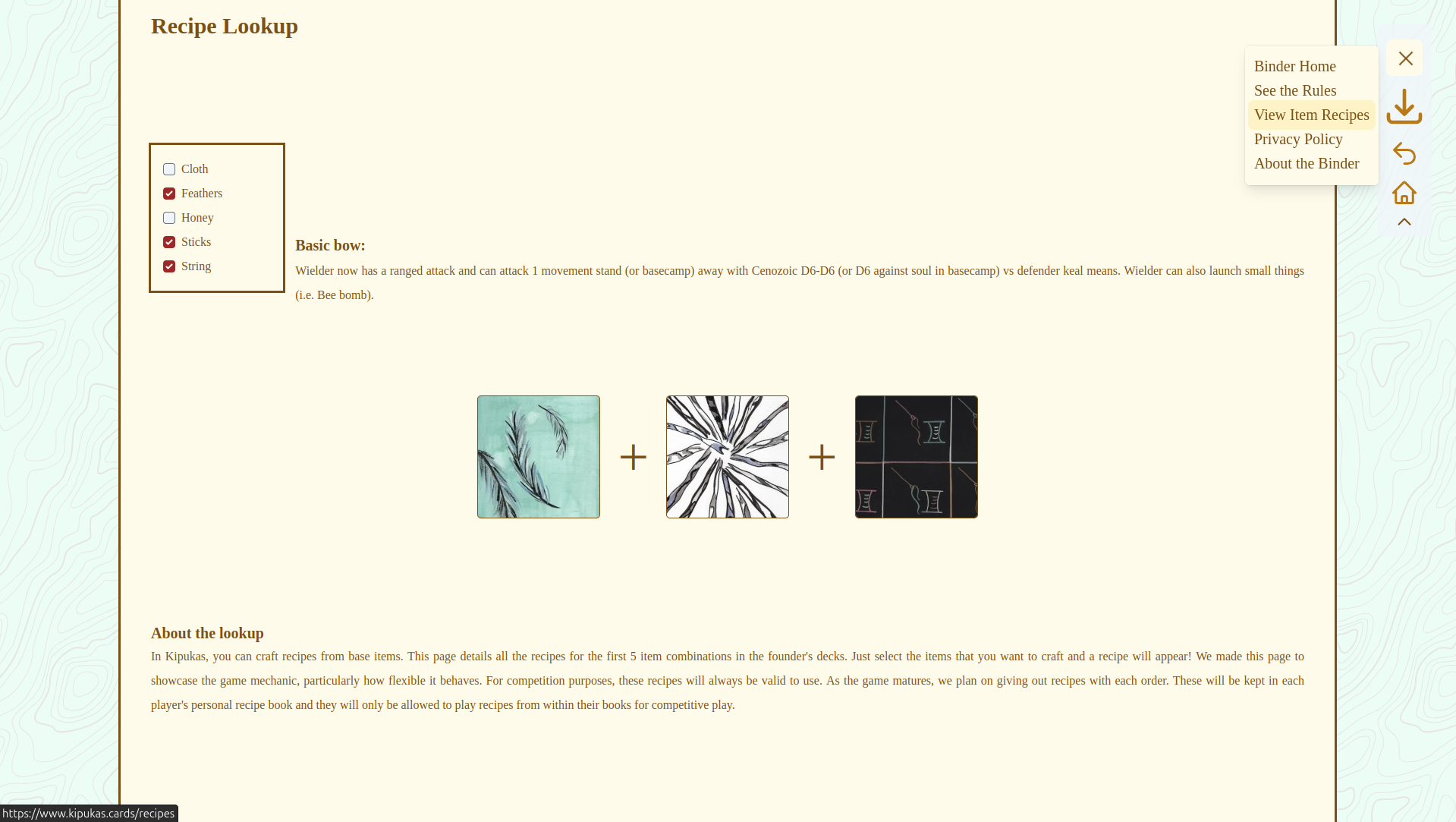
Personal Effect Cards
These cards are played at the beginning of the game and cannot be changed.
They add an ability for the player to use throughout the game. If no player
effect card is owned or the player prefers, then they can use the default effect as follows:
Place any card from the deck in front of the player. Play it in 5 diel cycles
Play Effect Examples
- Increase player affinity for an archetypal adaptation
- Immediate crafting of recipes that would otherwise require a special soul to be in play
- Decreased frenemy effects
- Search your deck and draw any card of a given type, either at the start of the game or after so many diel cycles
Stealing Cards
We don’t condone stealing another player’s card out of game; however, if you would consider such a thing, I doubt you care what we think. Despite this, we are more than happy to encourage stealing in game! Cards will tell you to steal either from your opponent’s hand, deck or either. You might be able to steal the cards revealed or unrevealed, depending on the instruction of the card. Either way, you begin by declaring whether you will steal from your opponent’s hand or deck. Then your opponent will fan out the cards you have chosen, either facing them (unrevealed) or you (revealed). Then you pick the card that you fancy and place it in your hand. If the card allows for stealing revealed, you CANNOT scan the opponent’s cards to make your decision in competitive play. For friendly play, handle that as you like. Most IMPORTANT, you CANNOT gain more than 3 cards in your hand from stealing. This is completely disbarred in Kipukas. For stolen cards, it is handy to have static cling stickers to place on the card sleeve as an identifier of who is in control of the card. These are not recommended to be put on the card itself as they cannot be guaranteed acid free. This could damage your card over repeated use, anor overtime. It should go without saying that stolen cards return to their original owners at the end of the game. The other options are gambling or actual thievery, in either case you should consult your local laws on the legality of your behavior
Discarding Cards and Deck Runout
Once a card becomes wasted, it is discarded into a pile and cannot be played again. Some card effects may target cards in either discard pile. If you run out of cards before the end of the game, don’t worry, you have not lost yet. You may continue using the cards you have in play on the kipuka. If both players run out of cards, either may still manage to take all the remaining territory even without cards in hand. Here they would win under standard conditions. Otherwise, play until no characters or species (including rouge species ) are left on the kipuka. At this point, the players stop contention under a forced peace and hold convention. Here they discuss how to proceed
- Keep the peace: Allow the player with more territories to win. If an equal number of territories is possessed, the game is a tie. (Good for a shorter game)
- Call the reserves: Both players choose whether to reuse the deck they just fought with or change to another deck. Each player writes either keep or change on their whiteboard. Next they reveal, at the same time, the decision they made.
It is worth while to note that if both parties are in total agreement to keep the peace this stragety is fully acceptable at compatitions. If an agreement can’t be reached within a few minutes, just rage-quit, because the other person must be pretty insufferable. Why were you playing a game with them in the first place?
Card Placement
All cards played throughout the game will dictate how and where they can be placed.
Placement Option
- Player controlled territory
- Opponent controlled territory
- Territory boarding player controlled territory
- Territory boarding opponent controlled territory
- Territory without claim
- Any territory at random
Placement Etiquette
- Play an unrevealed card vertically face down on the mat
- Play a revealed card vertically face up on the mat
- Play a revealed landscape card horizontally, but vertically when unrevealed or hidden
- Play a hidden card vertically face down under the mat
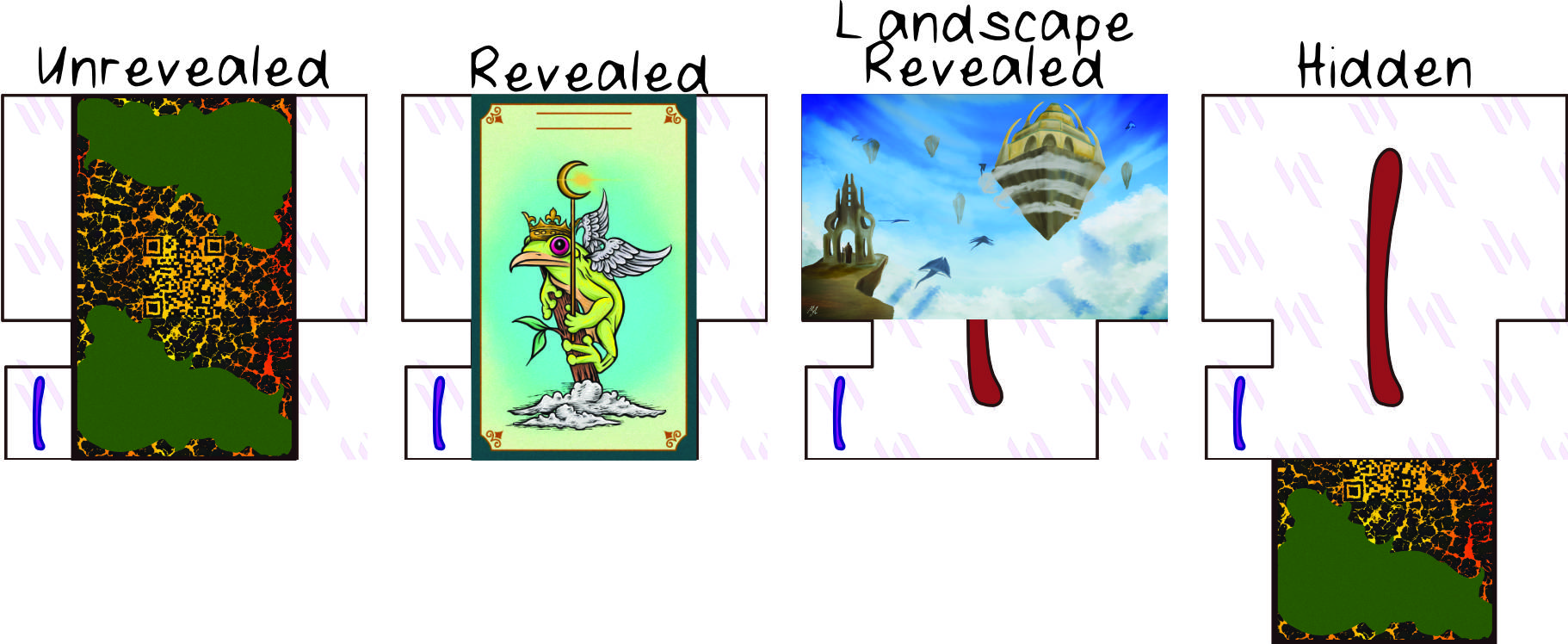
Building Decks
Decks are built gradually in Kipukas. To keep barriers to entry as low as
possible we offer a starter kit that includes a starter map (changes by season),
a starter deck or two of your choice (at first only the founder’s deck is
available, but more archetypal adaptation specific starter decks will be
produced), and two sets of tokens. Growing your deck after you purchase a
starter kit (or if you are ambitious, before ever purchasing one) involves
purchasing other starter decks separately, purchasing individual cards from
kipukas.us, purchasing and waiting out the incubation period for incubation
cards, or trading with people that you trust. Kipukas cards are valuable
pieces of fine art, as such we take their trade and resell seriously. You can
request any sell or trade to be brokered through Kipukas. A brokered trade
will involve both parties sending their cards to Kipukas. Each card in the
trade will be authenticated using our 7 factor authentication process. If all
cards involved in the trade are presumed authentic, we will complete the trade
and send the cards to their new owners. If any cards are found to be
inauthentic the trade will be canceled, the authentic cards will be returned to
their owners and the inauthentic cards will be retained by Kipukas. This
process protects your information as neither party gets to know the other’s
address while protecting you from counterfeit cards. Kipukas will also put
cards that you want to trade, sell, or auction on our website and inform you
of offers as they are made. Keep watch for Kipukas Trade Deals, where we
offer an exceptional trade from time to time (frequency increases as customer
base builds).
As for recipes, you can submit a request for the recipe card with your next
order. Recipes also act as information that players can trade. Standardly, one
recipe is given out with the purchase of three cards or three recipes with the
purchase of one starter pack. If a certain recipe is requested in the order
notes, it will replace one of the random recipes you would have received.
Incubation Cards
These cards can be purchased, traded, won or given away just as all the other card types; however, these cannot be played. Instead, they represent an incubation time that allows them to be traded for a soul with an increased loyalty (See Affinity for more information). The longer the incubation period, the rarer the card Kipukas will send to you. The prices of these cards are lower than the equivalent character or species available for purchase. Also, incubation cards allow access to the rarest card categories, normally reserved for competition winners and special event giveaways, if you are willing to wait out a long incubation period. The number of these cards is fixed for each category, so when they sell out, you will have to wait until one of the incubation cycles completes in order to incubate a soul of your own. For the unparalleled and winners circle rarity cards, you will be allowed to request a soul type. If you wish, you may also submit an artist’s rendition of the card with a backstory, then request that the card be incubated. It is not a guarantee that it will be produced; however, it will be heavily considered.Structure of a Deck
Deck Building
Decks must have 30 cards; no more, no less.
Deck Card Copy limits:
- Character Cards:
- 1
- Species Cards:
- 2
- Terrain Feature Cards:
- 2
- Trap Cards:
- 3
- Sabotage Cards:
- 3
- Item Cards:
- 4
- Personal Effect Cards:
- 0 (Players may use one at the start of the game, but these do not belong in the deck)
- Incubation Cards:
- 0
NOTE: Unless the limit is 0, a crafted version of the card can increase the copy limit by one
Maps (The Kipukas)
Maps are 3D representations of territory and control. Each map hosts stands that represent traveling time and 8 to 12 territories that represent control. Each territory can host a max of 3 souls, unless otherwise specified. In each territory there are stands for soul tokens and stands for base camp or capital tokens. Soul tokens represent the position of a revealed soul, while square base camps and capitals act as points of entry for new souls, a place for revealed or unrevealed souls to stay, and represent control of a territory Capitals act the same as base camps, but are particularly important to game play because your opponent will not be able to take your capital until they take all other territories on the board. Territories also represent opportunities or dangers for souls which typically dwell in or avoid the geography (See Character and Species (Soul) Cards: KEAL Means: Habitat and Maps (The Kipukas): Geography for more information). For competition purposes, only Kipukas produced boards are allowed; however, we encourage you to develop your own maps for personal play. If you enjoy your design, you should submit it to Kipukas. We might just produce it and pay you!
Movement
Each territory contains slots for placing base camp tokens and soul tokens. When a card enters the map it starts at one of the player controlled base camps or their capital, either unrevealed or revealed, dependent on the player’s choice. Cards cannot be moved this diel cycle. As it becomes strategically advantageous, each player should choose to move their souls in play. This can be done by following the lower lines which connect between the circular transit stands and the square base camp stands. Every territory hosts a max of 3 souls, and each soul has a finite number of spaces which it can traverse. When a soul moves, the card is placed on the mat slot with the same number as the territory moved into. In order to move, you must reveal the soul unless the card says otherwise. If a territory only contains transit slots, this is a transit territory. This occurs due to the difficulties required building within the territory, figuratively speaking. A good example is a territory filled with water (See Maps (The Kipukas): Geography for more information about water movement). These locations are clearly labeled on the mat as ’transit territory’, so cards moved within should be placed accordingly. If an enemy is in the same territory that you moved to, you must engage an attack. Also, you cannot move past an enemy waiting on a movement slot. See Attack, Defense, and Retreat for more information; otherwise, read claiming territories below if you just moved into a base camp slot. If a revealed soul is in a base camp, then no soul token is used. If the soul is currently on a movement stand, a soul token is used to represent this. If more than one soul is on the same movement stand, stack the individual tokens to represent the group. If you have two souls in the same territory on different movement stands, flip a soul token over and declare which soul is represented by that token. If your soul moves back into a base camp, then keep the card revealed, move its card to the rear of the territory’s cards stack, and remove its soul token from the board.
Moving Downed Souls
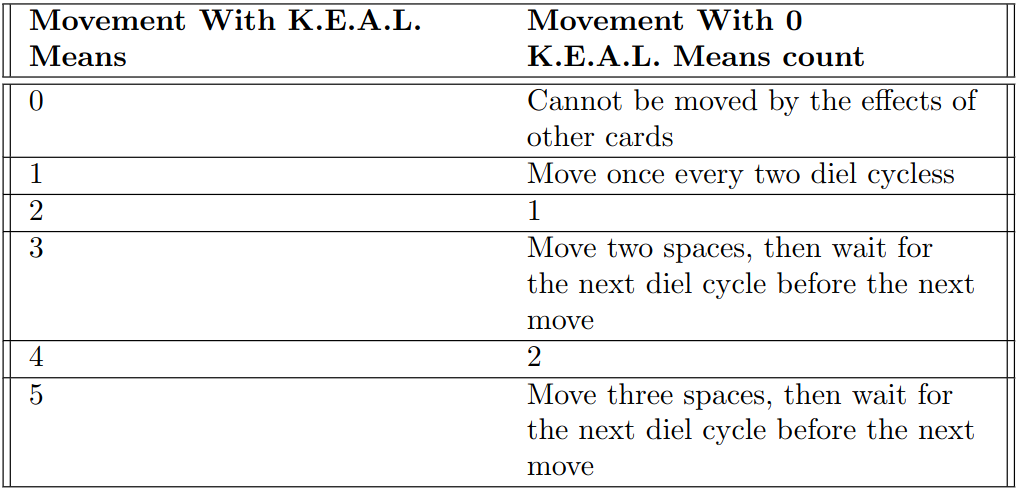
Claiming Territories
In order to win the game, you must first claim territories. To claim territories, you must move at least one soul into the base camp of the territory you wish to claim. If it is empty, congrats, you have a new base camp! Place a base camp token on the square stand, then continue your turn. Otherwise, if the territory has a claim on it, you must oust your opponent by defeating their traps, terrain features, and souls before you can replace their claim with your own. See Contention below. There is no limit to the number of territories that can be claimed in a single day. If you think you can take all territories, including the opposing player’s capital, in a single day, go for the win!
Contention
If a frenemy’s soul enters territory controlled by opposition, the territory comes into contention. Under contention, players must perform the card activation sequence (See Card Activation for more information). Cards act when you enter an enemy’s territory. You will need to contend with their traps and terrain features before attacking revealed souls. In order to claim the territory, you must take the base camp by moving a soul onto the base camp stand. If your opponent has any revealed souls in the territory you moved into, you must attack and defeat all enemies or become defeated yourself to relieve the contention. If your opponent has multiple enemies in a territory, you can attack one or all (one at a time) of the enemies in the space, but you must defeat all enemies to progress out of the space in the same diel cycle. If you decide to stop your attack before all enemy entities are defeated, your opponent will either choose to attack on their next turn or retreat and move out of the territory. If they stop their counterattack before all your souls are defeated, on the following day, you have the option to continue the fight or retreat and move out of the space. (See Attack, Defense, and Retreat: Retreat for more information) After the revealed souls are defeated, you can force your opponent to reveal any unrevealed souls. The opponent then has the choice to stay in defense of the territory or retreat out of the territory with the previously unrevealed souls. If you are not successful in taking the territory, your opponent is not obligated to reveal entities, traps, or terrain features unused in their defense. Once your opponent has exhausted all of their defense options, and you move a soul into the base camp, you should replace their base camp token with your base camp token. At this point all terrain features and items must be revealed then control of the cards, while they are in play, is transferred to the victor. If a set trap exists in the newly controlled territory, it stays unrevealed and it still works for the player that set it. Each time the player souls into or within the territory it will attempt to activate against them. (See Trap Cards for more information)
Geography
Each territory has a geography that corresponds to the map’s topography. This geography interacts with the habitat of the soul cards in the territory. (See Character and Species (Soul) Cards: KEAL Means: Habitat for more information)
In addition to the boat(s) marking the water habitats, Kipukas maps use docks to represent the points that souls can enter the water from. If a movement path leads to water, but no dock is present, you may not enter the water at that location with a boat. However, if you entered from a different location with a dock, you may land at that point. Cards may attempt to swim by rolling 2 D6. If you roll 2 + 2 the card has successfully swum. Attempting to swim does not cost movement, but can only be attempted once per soul per day
Representation of Geography on the Kipuka

Mountain Habitat: A-Frame House Geomarker

Forest Habitat: Log Cabin Geomarker

Plains Habitat: Ranch House Geomarker
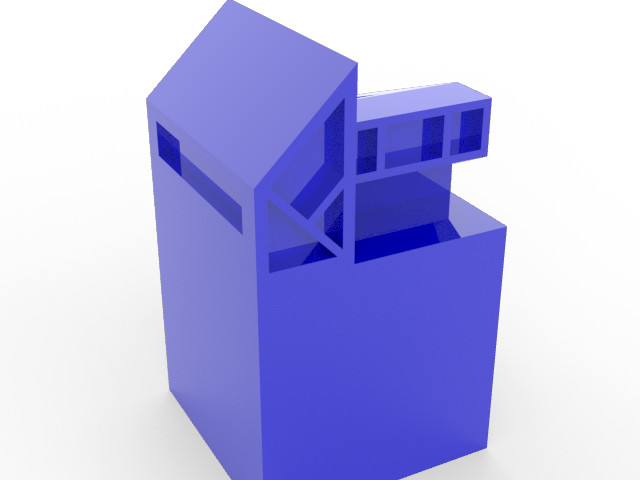
Volcanic Habitat:Modern House Geomarker
Representation of Geography on the Kipuka
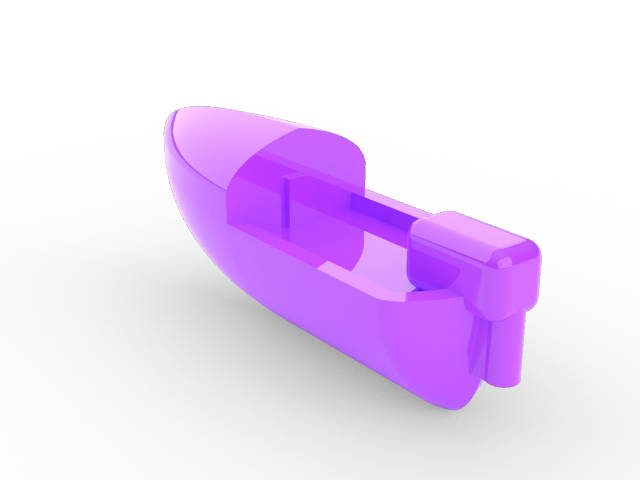
Water Habitat: Boat Geomarker
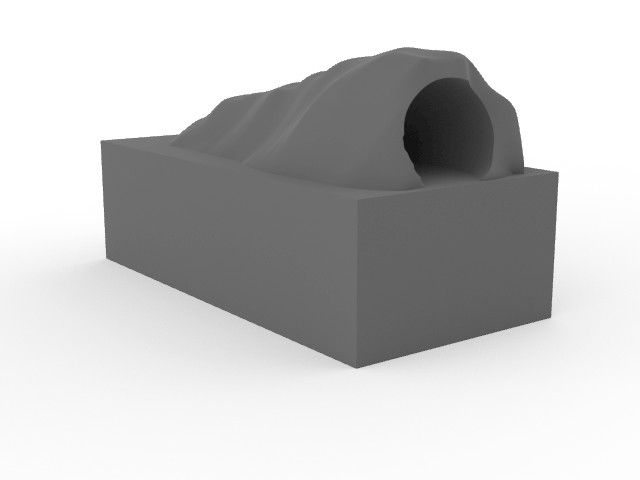
Underground Tunnel:Connect territories and shorten travel for underground dwellers
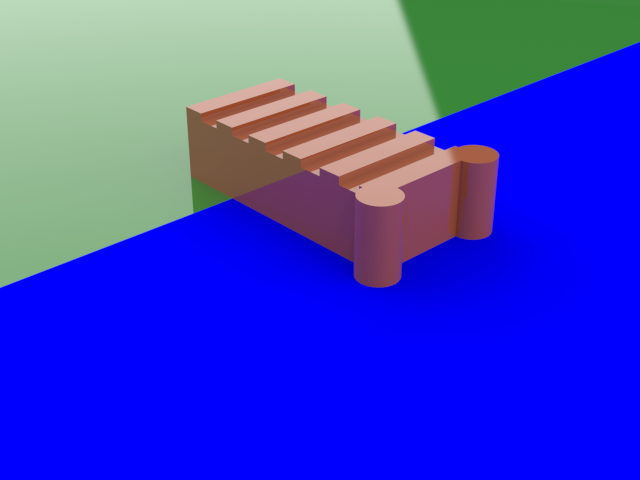
Water Habitat: Dock Geomarker (Point of Entry)
Game Mats
Mats connect a soul card’s position with the soul token’s position on the map. This makes game play more comfortable by organizing the game space. Kipukas will have a set of mats, but will encourage community development and artist support with regard to producing more engaging and creative mats. Make them as personal as you wish. The only production guideline, as of now, is the number of section slots must be equal to the number of territories. These must include reference numbers. Additionally, transit territory space must be allocated on the mat. The standard mat size that Kipukas produces is 17×24in. As always, you can submit your creations to us, and you might just have something we want to produce and get paid!
Story Challenging Your Opponent
Continuing along with the theme of the previous section, there is a lot going on in this game. Along the way, we will make mechanics that conflict on a reasonability level. My personal favorite example is a dragon wielding a stick to boost its attack. That is all sorts of wrong. If your opponent attempts to make a move that just simply makes no sense, you have the right to contest it. You should do it in this way.
- Call them out before the effect is used in game play
- Pause the contention and hold convention (have a talk)
- One player must concede reasonability (either for or against)
- if required, enlist a tie breaking third individual to make the final call
This Game is Hard!
Yes, it is definitely a lot to learn at first. Kipukas is a game that rewards repeated play with ease. The more you can play the game, the better you will know the card mechanics, the turn structure, and the interactions between the pieces. The overall plan is to create tools (i.e. phone/web application) to aid players in keeping track of the game components. This is, of course, if there is enough interest in the game as a whole. Either way, we try our best to make this rules set as comprehensive and digestible as possible. When possible, we will post videos to clarify game play aspects and intent of the mechanics. In all, don’t worry about capturing every aspect of this game. As I stated, there is a lot going on. Have fun with it, make house rules, and we are always open to suggestions. These rules are geared for a future with competitions where everything will be scrutinized. At this point, don’t get bogged down. You can do it!
Play Style Options
- Domination:
- Winner controls all territory in the kipuka. (Standard play style covered in this guide)
- Mass Contention:
- Domination with up to 4 players on a standard kipuka. (8 territories = 2 player max, 9–11 territories = 3 player max, 12 territories = 4 players max) At competitions expedition boards will be available for play and purchase that will accommodate many (read a lot, gross, giant boards) more players. Same rules as Domination, but more contention means a tougher fight and more decks than are available via a starter kit at the moment.
- Band together:
- Players must work together to defeat a third party (i.e., ref, celebrity player, autonomous party, etc.), The player with the largest number of spaces held wins. If the third party dominates the kipuka then both players lose.
- King of the hill:
- A territory is selected either randomly or by a ref that must be claimed and held for a certain number of diel cycles to meet the victory condition. Players start with only a capital in adjacent territories.
- Captive:
- Each player gives the other a soul card, which they shuffle into their deck. Once drawn, the player must play the card unrevealed. The first player to reveal and lead their soul back to their capital wins
- Highest body count:
- Territory claims do not matter. Capitals cannot be taken. The game ends when either player runs out of cards. The victor is the player that managed to defeat the most soul cards. A number of soul cards and total card limit should be agreed upon except at competition where deck building strategy is a sizable component in this style of play
- The ends must justify the means:
- The player with the most territory gained to souls lost after a fixed number of diel cycles wins.
- The cost is too great:
- This uses standard Domination rules, but in addition it imposes a soul defeat limit that if hit removes the player from the game.
- Coastal war:
- The player to control the most coastline after a fixed number of diel cycles is the victor.
- The hunt:
- After a fixed number of diel cycles, the player with the most territories plus the hunt bonus (player with most souls with a certain type defeated receives a +3 bonus) wins. Both players must have an agreed number of those types in their decks. The huntable cards must be played and cannot be discarded. Additionally, an overall deck size must be agreed upon.
- Find the treasure (Special at competitions):
- A ref secretly marks a space on the board with an item card, the first player to claim that space wins the match and receives the item card. Players start with only a capital in adjacent territories.
- Explorer (special at competition):
- A ref secretly marks a space on the board with a terrain feature, the first player to claim that space and successfully use the card against their opponent wins the match and receives the terrain feature card. Players start with only a capital in adjacent territories.
- Trap Springer (special at competition):
- A ref secretly marks a space on the board with a trap card, the first player to set off the trap in that space wins the match and receives the trap card. Players start with only a capital in adjacent territories.
- Off to the rescue (special at competition):
- A ref secretly marks a space on the board with a soul card, the first player to claim that space and usher the survivor back to their capital wins the match and receives the soul’s card. Players start with only a capital in adjacent territories
- Cradle Robber (special at competition):
- A ref secretly marks a space on the board with an incubation card drawn from a bag, with scarcity proportional to the incubation cards in circulation. The first person to find and take the surrounding sections (thereby protecting the card) wins the match and receives the incubation card. Players start with only a capital in adjacent territories.



